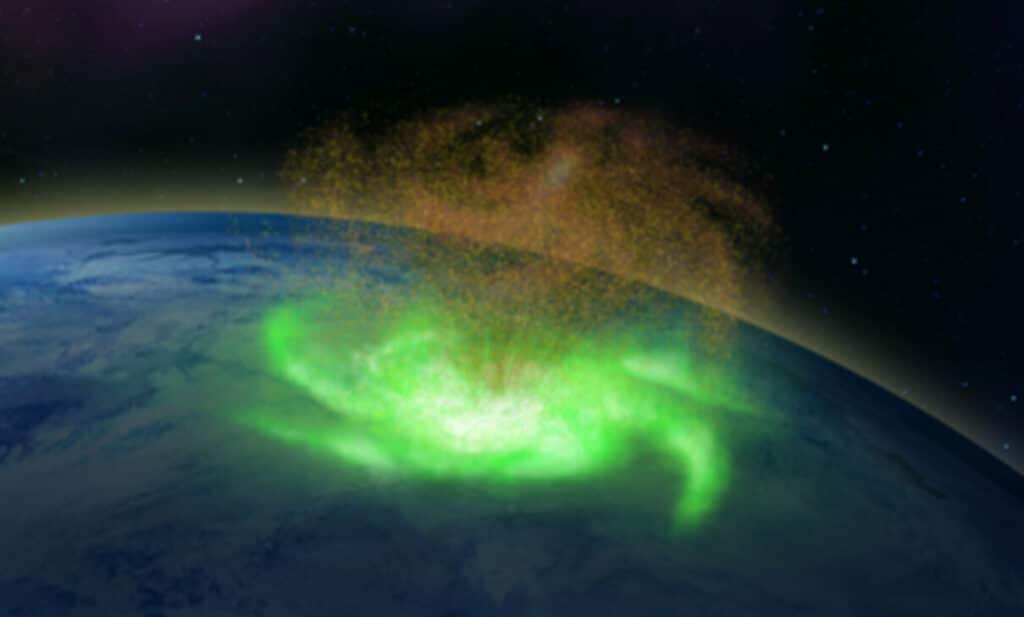When we think of hurricanes, the first thing to come to mind might be the radar image of a one-eyed storm spinning in the tropics, or video of powerful wind and rain battering cities. It turns out these storms aren’t just unique to the Earth’s lower atmosphere, however. Scientists say “space hurricanes” also can be seen in the upper atmosphere of planets.
In fact, scientists at Shandong University in China and the University of Reading in England are the first to identify a space hurricane on radar. This observance helps astronomers learn more about the effect of space phenomena on planets.
Researchers observed the space hurricane from satellite data in 2014. The hurricane was much like those in Earth’s lower atmosphere, lasting a long period of time and containing a large amount of momentum and energy.
A 3D image was produced which revealed the width to be about 1,000 km. The hurricane contained plasma flowing in the center which spewed out electrons rather than water. It had many arms spiraling off of the main body and spun in a counter-clockwise direction.
“These features also indicate that the space hurricane leads to large and rapid deposition of energy and flux into the polar ionosphere during an otherwise extremely quiet geomagnetic condition,” professor Qing-He Zhang, lead author of the research, explains in a university release. “This suggests that current geomagnetic activity indicators do not properly represent the dramatic activity within space hurricanes, which are located further poleward than geomagnetic index observatories.”

“Until now, it was uncertain that space plasma hurricanes even existed, so to prove this with such a striking observation is incredible. Tropical storms are associated with huge amounts of energy, and these space hurricanes must be created by unusually large and rapid transfer of solar wind energy and charged particles into the Earth’s upper atmosphere. Plasma and magnetic fields in the atmosphere of planets exist throughout the universe, so the findings suggest space hurricanes should be a widespread phenomenon,” adds Professor Mike Lockwood, a space scientist at Reading.
Most hurricanes in Earth’s lower atmosphere are detrimental to life killing anything in their path of destruction. Flooding usually occurs because of extreme rain and coastal storms. They are associated with strong winds and clouds in a spiral arrangement, as well as a low-pressure center we refer to as its eye.
Similar to these types of hurricanes, researchers have found hurricanes on the surface of Mars, Jupiter, and Saturn. The sun also has gases that swirl in a hurricane-like formation referred to as solar tornadoes. However, upper atmospheric hurricanes have only been observed on Earth so far.
“This study suggests that there are still existing local intense geomagnetic disturbance and energy depositions which is comparable to that during superstorms. This will update our understanding of the solar wind-magnetosphere-ionosphere coupling process under extremely quiet geomagnetic conditions. In addition, the space hurricane will lead to important space weather effects like increased satellite drag, disturbances in High Frequency (HF) radio communications, and increased errors in over-the-horizon radar location, satellite navigation, and communication systems,” says Zhang.
This study is published in Nature Communications.












